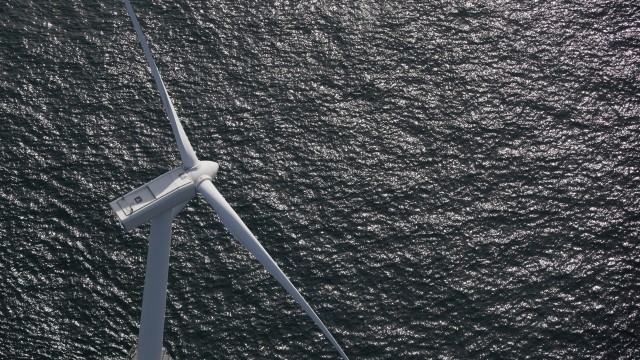Wake-ing up to uncertainty – and more…
Published January 2016
Uncertainty associated with wake calculations offshore may seem like a very specific aspect of wind farm development, but as I highlight below it has real impact on your projects. Read on to see what’s changed after a recent OWA workshop…
Recently, I was excited to be invited to attend the Offshore Wind Accelerator (OWA) technical advisors meeting, organised by the Carbon Trust, that sought to get agreement on what level of uncertainty we, as advisors, should use in our energy prediction estimates for offshore wind farms.
Historically many in the offshore wind industry have used an uncertainty of 40% – 50% for wake losses, a figure which is not routed in any measured experience. This means that if wakes are expected to reduce energy production by 12% then the uncertainty (one standard error) is +\- 6%. The P90 [see note 1 below] value is therefore pushed further downwards away from the central estimate. This P90 value is of course one of the key variables used in the financial model, as nicely demonstrated by Gemma Harrington, Senior Energy Analyst of Mainstream during the workshop; the lower the P90 the less debt you can get into a project, and so the gearing is worse, increasing the cost of capital as equity is more expensive than debt. As finance is around 30% of the cost of an offshore wind farm this makes a big difference.
So why do some banks’ engineers commonly use a 40%-50% figure? In the early days of offshore wind the financing industry was dealing with a new concept of risk and a limited understanding of wake effects led to high uncertainties being assigned to project financing. However the situation is very different and through the good work of the OWA and others we now know much more. A compelling body of evidence generated through a series of wind resource measurement campaigns and operational real life data now exists. These demonstrate that for most sites, 50% uncertainty, is far too high and 25% would be more appropriate. This alone, based on Gemma’s estimate of improved debt:equity ratio could cut the cost of offshore wind by 2.5%.
This is very significant and another example of how the offshore wind sector is working to reduce costs simply by reducing uncertainty. No new technology is needed, just improved knowledge and understanding.
But what I found more encouraging was the collaborative nature of the event. Usually technical advisers only meet at opposite ends of the table, squaring up to argue over a percentage point here or there. Yet here we were having open and frank discussions that will have immediate, tangible benefits. Many people have written papers on technology innovations needed to lower the cost of energy – but not so many on how collaboration, and a true sense of partnership can in itself have a material impact on the sector. I see huge potential here.
I left feeling optimistic because our understanding of the wind as an energy resource is getting better, but more importantly this greater understanding is being built through collaboration across the industry.
My thanks to the Carbon Trust, the OWA partners and all those who attended in the spirit of collaboration and partnership.
Note 1: In energy analyses, predictions of expected energy production are linked to a future time horizon. This is because the wind and other factors vary from year to year and so statistically taking an average over a longer period, say 10 years, changes the risk and uncertainty when compared to a shorter period (i.e 1 year). The P50 energy value, or central estimate, is the energy production value which has a 50% chance of being exceeded – equally, there is a 50% chance that the energy production will be below the P50 value over the time period. The industry has iterated to refer to a few key probability of exceedance levels as benchmarks for comparing projects. For example, the 10 year P90 and 10 year P75 are common parlance. They represent the energy production which has 90% (and 75% respectively) probability of being exceeded when averaged over a future 10 year period.






